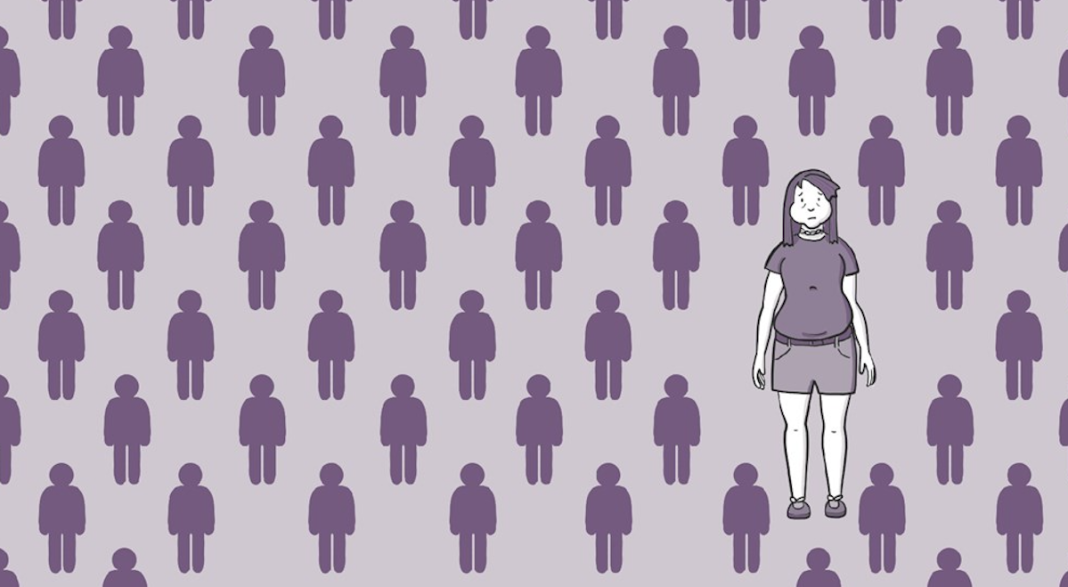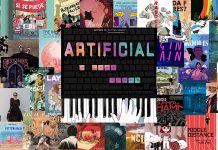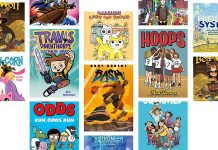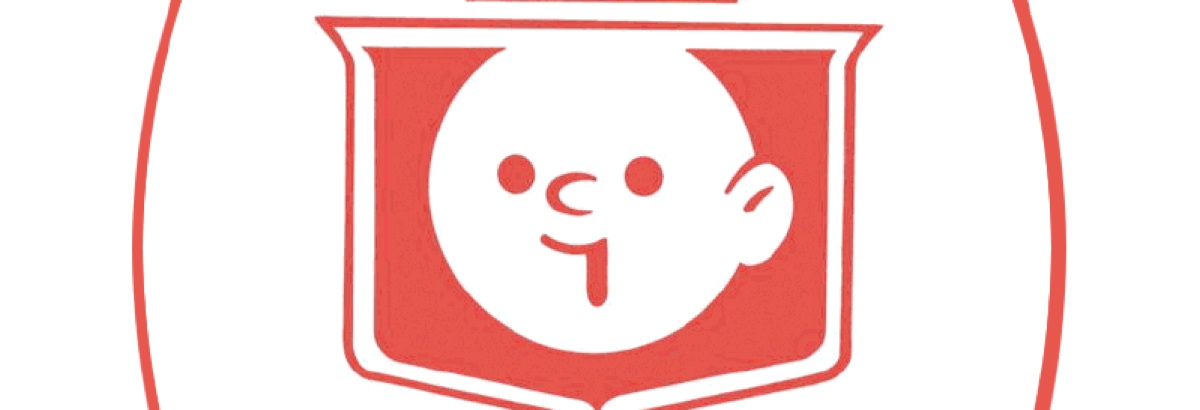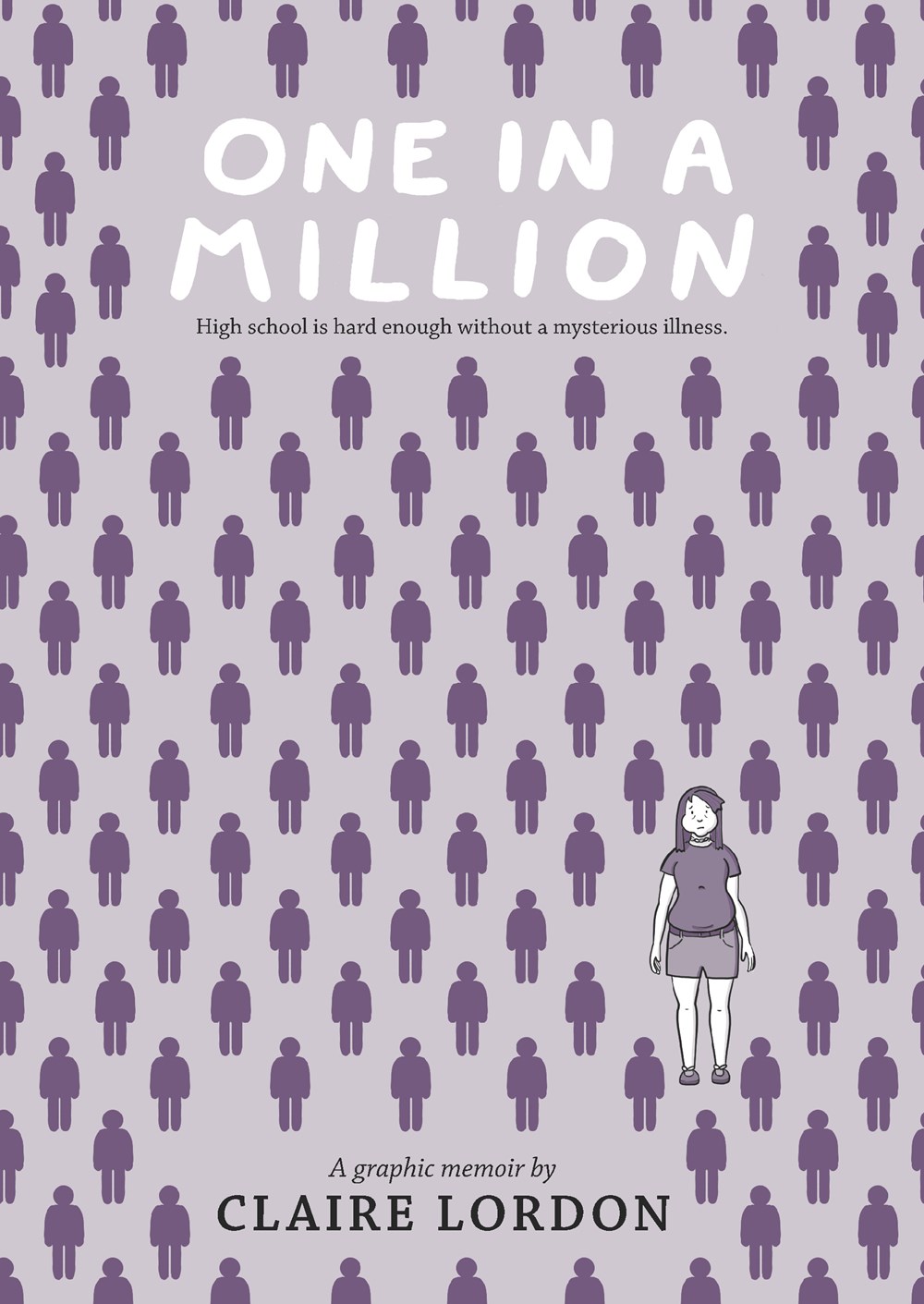
The Beat caught up with Lordon over email to learn more about One in a Million. We asked all about her creative process, about what it was like to work on such a personal true story, and about what her favorite Sour Patch Kids flavor might be!
AVERY KAPLAN: One in a Million is a work of nonfiction. Can you tell us about the genesis of the comic? When you decided to tell this story, did you immediately know it would be a graphic novel?
CLAIRE LORDON: Thanks for having me. The idea of really making a book about my time being sick as a teen came in 2017 when I went to the Highlight’s Foundation graphic novel workshop. I had been thinking that my story could be a book for a while, but it was the first time I had shared with others about my idea. With my background in illustration, I knew it was always going to be a graphic memoir. I especially wanted to show visually what having specific symptoms felt like, for example, depression.
KAPLAN: What was it like to work on such a personal true story?
LORDON: In some ways it was easy, but in other ways it was difficult. It was easy because I already knew the whole story. In more ways it was difficult though because I had to figure out when to start and end the story. I also had to cut so many events because I only had so many pages to work with and so much happened within this roughly eight-month time period. The most difficult part was the mental aspects of revisiting some of my worst memories and then drawing them. It was very challenging, but I took my time with it and I regularly checked in with my therapist.
KAPLAN: Did you have a creative routine you followed while working on One in a Million?
LORDON: Great question! I’m not sure I had much of a routine, but I did go through a creative process. I had a giant whiteboard in my room that had a horizontal line for every page in the book. The vertical lines had W (Writing), T (Thumbnails), S (Sketch), I (Ink), C (Color), and I’m pretty sure I had an E in there too (Edits). It’s hard to see progress being made on such a big project. Whenever I finished a task for a page I put a X in the corresponding box. Over time I slowly started to see more and more X’s and I could see progression. Adding the final X was such a great feeling!
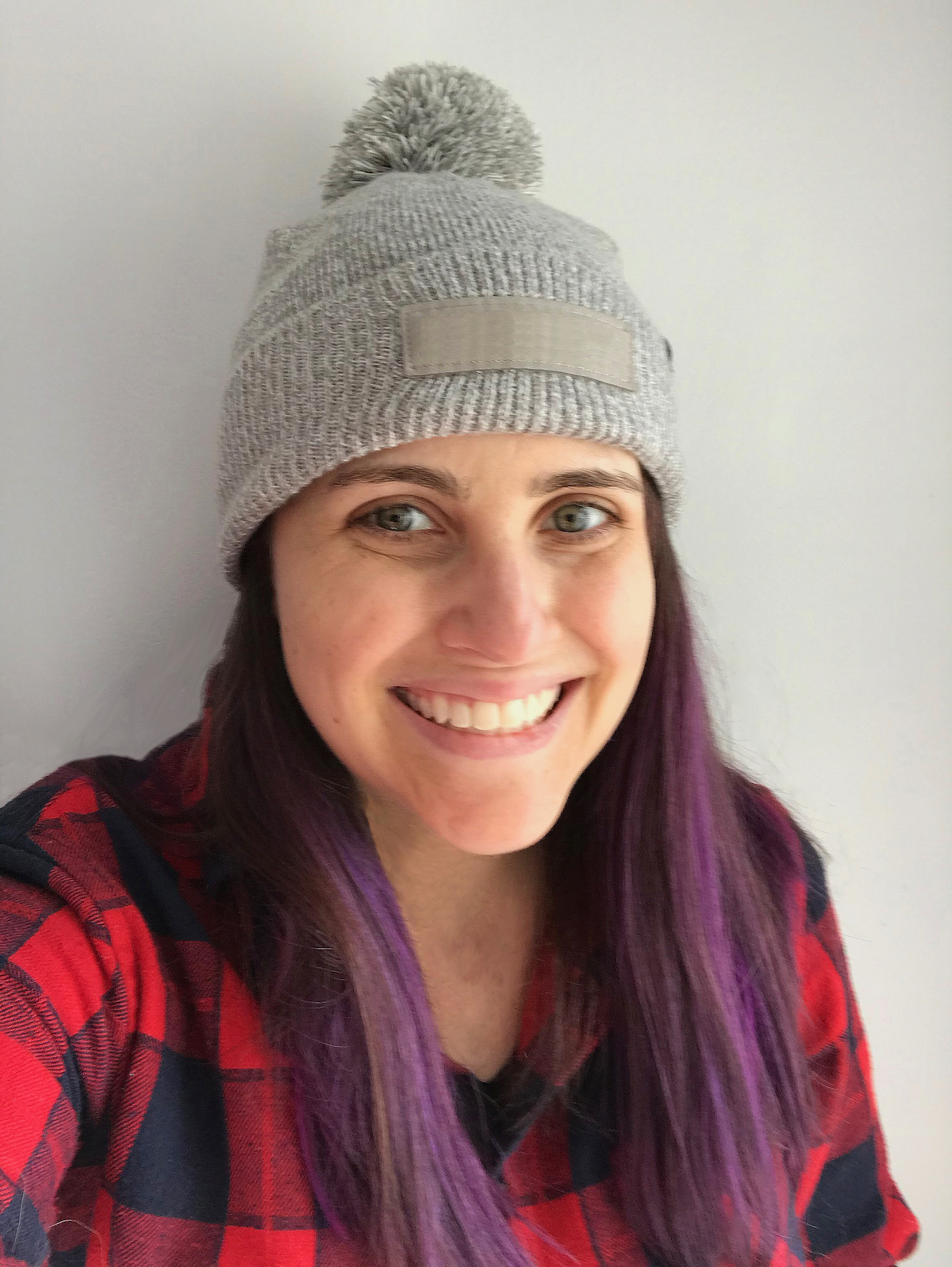
KAPLAN: Can you tell us a little bit about the digital art tools you used to make One in a Million?
LORDON: Definitely! I sketched my thumbnails with a pencil on paper, otherwise mostly I used Photoshop to create the art. The pens that I used are called “Hard Round Pressure,” “Thick ‘n Thin”, “Gouache A Go Go” or “Gouache Bonus Gritty Dry” (I can’t remember which gouache brush I used), and “Go Gritty.” All of these except “Hard Round Pressure” were created by Kyle T. Webster. For the symptom pages I used India ink on watercolor paper and scanned it in for those brushy textures.
KAPLAN: One technique utilized throughout One in a Million are pages with inverted color, which depict how things feel and/or emotions. I’m curious if these very different-looking pages presented any technical or creative challenges?
LORDON: I like to call these my symptoms pages as they show the symptoms I was experiencing. The challenge was to make them look different from the other pages in the book. Almost right away I knew I wanted the pages to have a black background due to the dark nature of them, and because I started with depression. I also wanted the drawing style to be a bit different than the rest of the book with the drawings being reminiscent of my sketches when I was seventeen. The most technical challenge was making the ink wash backgrounds that I scanned into the computer show up well on the printed page. It took a couple times to make sure that it showed up instead of it being a monotone black color.
KAPLAN: In your author bio for One in a Million, you mention you have worked on “books, comics, murals, maps, and greeting cards.” I’m curious if any particular projects among this diverse crop of work stand out as something you’d like to share with us?
LORDON: Sure! The book I’m most known for is “Lorenzo, the Pizza-Loving Lobster.” It’s about a lobster discovering pizza for the first time and how he tries to recreate it with his best friend. I also have a series of funny dog comics about the real-life adventures of my dog Hugo. In the future, I’d love to work on more murals because they are so much fun to create.
KAPLAN: I notice a repeated motif of gummy bears, and in the afterword you mention Sour Patch Kids. Do you have a favorite flavor of Sour Patch Kids? And are there any other gummy candies you’d like to shout out?
LORDON: Great catch! You’re the first one to ask me about this. Sour Patch Kids are definitely my favorite candy. I love sour gummies so much! As far as my favorite flavor goes it depends on what kind of mood I’m in. Sometimes I like the watermelons, other times I’ll go the extreme (extra sour), but if I had to say my favorite regular flavor it would be a tie between lime and blue raspberry. I also like the non-traditional flavors such as the lemonade mix and berries mix. Other gummy candies I love are Nerds Rope and sour gummy worms. Squish candy also makes amazing gummies too- yum!
One in a Million is available at your local bookstore and/or public library now.


